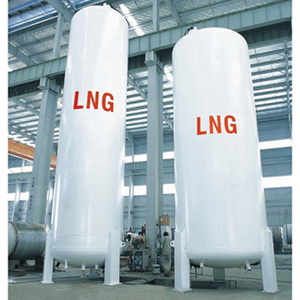Energy / Resources
-


WHITEPAPERS
Monadelphous’s Missing Mojo
Roger Montgomery
August 19, 2013
REPORTING SEASON SPECIAL EDITION: In this bonus white paper, exclusively for rogermontgomery.com subscribers, find out what Montgomery’s view on Monadelphous’s intrinsic value is and why the former market darling Monadelphous is lacking in mojo. continue…
by Roger Montgomery Posted in Energy / Resources, Whitepapers.
-
Monadelphous’s Missing Mojo
Roger Montgomery
August 19, 2013

Following a heavy share price drop earlier this year, Monadelphous Group may look like a bargain to some investors. In this article, Roger Montgomery discusses our view on the former market darling.
Successful value investors have a clear focus: buy exceptional companies at bargain prices. Mining services provider Monadelphous Group (ASX:MND) has performed exceptionally for nearly a decade, and after slumping 40 per cent this year on fears of a fading resources boom it may look like a bargain.
The market doesn’t see it that way. Broking firms have fallen over themselves this year to issue sell recommendations on MND and short sellers and even some prominent offshore investment newsletters have gone cold on the former market darling. Its share price has tanked, falling from over $27 to under $15 recently.
In turn, competition among mining service firms has intensified and led to greater price discounting and lower profit margins. At the same time, big mining companies have renewed focus on cost cutting to help counter falling revenue, meaning further pressure on service providers.
The result is poor earnings visibility for most mining services stocks. Service providers, of course, point to their pipeline of work to reassure the market. But the pipeline can dry up quickly for companies at the mercy of projects being deferred or cut back.
Seasoned value investors know the best time to buy is when everyone is selling and excessive market noise is driving stocks well below their intrinsic value. Such scenarios can create tremendous value opportunities for investors who go against the tide.
Could there even be parallels between higher-quality retail stocks and the best mining services stocks after recent price falls? Retail stocks were thumped last year amid market fears over a slowing economy and the threat of online retail sales. Six months later, the best retailers, such as JB Hi-Fi and The Reject Shop (both owned by Montgomery Funds), had soared off their lows.
Nothing had changed fundamentally for retail – if anything, the outlook has deteriorated in recent months as consumer and business confidence has waned and retail sales growth slowed. The market simply over-reacted and oversold retailers, creating opportunities for value investors like Montgomery.
True believers could argue the same situation is unfolding for MND. Not unlike JB Hi-Fi in some ways, MND is its sector’s highest-quality company, firmly in the sights of short-sellers and bearish broking analysts, and battling a perfect storm for its industry.
The mining services sector has been a sea of profit downgrades and smashed share prices this year. Mining activity has slowed sharply because falling commodity prices have forced billions of dollars of projects to be cancelled, deferred or cut back. More cancellations seem inevitable.
At the full year MND reported an ‘abnormal’ period of growth. Full year 2013 profits grew to $156.31 million from $137.34 million previously. After tax profit rose 25 per cent on the back of a 37.8 per cent rise in revenue to to $2.61 billion. The engineering construction division (booking $700 million in, mostly, new iron ore contracts) reported a 56 per cent rise in revenue, and 50 per cent growth was recorded in infrastructure division revenues. Maintenance and industrial services however remained flat.
Importantly, the company noted that operating cash flow was being detrimentally impacted by mining customers lengthening contracts and increasing their payment terms. Chairman John Rubino wrote in his Shareholder letter, “Customer sentiment has changed from an aggressive growth focus to an efficiency focus as commodity prices have normalised in a rising cost environment”, adding, “with market conditions softening…2013/14 will be a year of consolidation
with revenue levels moderating and not expected to reach those achieved in the previous year.”
This is no market for companies with even a sniff of earnings uncertainty. Fund managers have shown they will pay higher multiples for large and even small-cap companies with “annuity style” recurring earnings, and dependable growth, such as telcos, utilities and banks – and punish the rest.
The big problem is nobody knows where the resource sector malaise will end. Trying to second-guess China’s economic strength and short-term commodity price movements is a mug’s game. The best guide is history: the commodity price cycle has a habit of doing better than the market expects on the way up, and worse on the way down – and it always takes longer to play out than investors expect – or should we say ‘longer than investors forget’?
Another certainty is the resource sector being a big ship to turn. Key headwinds for the sector, notably high wages and input costs, are starting to ease as lower demand pushes down prices. The resolution of the federal election on September 7 will help
if the Coalition is elected and reduces green tape and other regulatory and taxation uncertainty (carbon) for miners. And the lower Australian dollar is helping offset falls in US-dollar-priced commodities for local miners and ease some pain.
But these trends will take time to help resource projects. Perhaps in a few years the smart money might recognise the seeds have been planted for the next boom in resource stocks. For now, we believe a slow, painful transition is ahead as the resource sector deals with its own “new normal”.
The other problem is the nature of many mining services providers: high capital investment, high fixed costs, and rapidly depreciating equipment that can sit idle for months. This is a great industry when demand is strong but the sector historically only covers
its cost of capital under boom conditions. It is a terrible sector when projects quickly stop and one must remember that service providers have little flexibility.
MND’s result was strong but such growth cannot be repeated in coming years as the resources investment boom tapers.
As the market obsesses about next year’s earnings, it is worth examining MND’s strategy during this transition period for the resources sector. With revenue slowing, it wants to recruit more of the best talent, improve efficiencies, cut costs and diversify the business into other sectors.
Newspaper reports in August suggested MND might invest in the troubled telecommunications contractor, Service Stream, but MND did not respond to the rumour. It clearly has the balance sheet power to buy weakened competitors and move into other sectors.
Essentially, MND is de-risking the business and positioning it to cope with continuing profit-margin pressure and client demands for more service efficiency. It is a smart strategy, although critics could argue the transition should have happened earlier and that it adds to investment risks.
From a sentiment point of view, strategic shifts that create efficiencies and diversify earnings are not nearly as sexy as big contract wins and can quickly bore an impatient market. But they can also lay the groundwork for the next growth spurt, and reward long term investors who can withstand short term share price pain and volatility.
Overall, the macro outlook for MND and other service provides suggests more profit downgrades and disappointments (as we have been warned about by Boart Longyear), a pick-up in mergers, and even a few companies going into in administration in FY14. It is a brave speculator (rather than investor) who believes mining services stocks cannot possibly fall any further, after savage declines this year.
Value investors must consider whether MND can navigate through these conditions and come out stronger as it uses its balance sheet strength to diversify operations, and mop up weakened competitors. If it can, today’s valuation will look, with the benefit of hindsight, like a rare opportunity.
MND’s record gives hope. The market, of course, always looks forward, but in times of great earning uncertainty it can pay to look backwards as well. Monadelphous’s return on equity, above 50 per cent for the past seven reporting periods, is exceptional.
Its management team is among the best-regarded in the mining services sector, debt is low for a company of its size, and it has a history of under-promising and over-delivering. It has all the hall marks of a Montgomery-qualified business.
The $1.5-billion service provider, involved in large engineering construction projects, maintenance and industrial services, and infrastructure, earns a big chunk of its revenue from blue-chip clients such as BHP Billiton and Rio Tinto. In this market, look for mining services companies that are leveraged to production rather than exploration projects, and to lowest-cost miners that will survive if commodity prices fall further.
The critical question, of course, is whether MND’s valuation fairly reflects these opportunities and threats. Importantly, investors also need to be satisfied that the prospects for intrinsic value appreciation are bright. Speaking with the benefit of some experience, there is a risk of further declines to estimated intrinsic values if the industry doesn’t consolidate dramatically by attrition and price competition becomes irrational.
While MND might be trading at a discount to current estimates of intrinsic value, it is only significantly underpriced if one believes valuations may stabilise from here or rise.
According to consensus forecasts, MND will have to endure falling return on equity over the next two years. Investors should always look for companies heading the other way, with big future increases in ROE and intrinsic value.
MND should have a pole position on watchlists for investors who are comfortable with higher-risk sectors, such as mining services. It is not quite value, assuming a high margin of safety is required, but further falls could be a catalyst for more aggressive fund managers to accumulate the stock.
Importantly, we believe there is time for more conservative value investors to assess the situation. The resource sector’s transition will take a few years to play out, and MND itself could have a year or two of consolidation, before (if) stronger growth resumes.
by Roger Montgomery Posted in Energy / Resources.
- save this article
- POSTED IN Energy / Resources
-

Mining services this reporting season
Russell Muldoon
August 19, 2013
Following on from Ben’s post last week on Boom Logistics Limited (BOL), three other mining services sector-related businesses have also reported so far. continue…
by Russell Muldoon Posted in Energy / Resources, Insightful Insights.
-

All gloom and no boom
Ben MacNevin
August 16, 2013
The crane industry in Australia is fragmented and highly exposed to capital-intensive projects in the mining and construction sectors. As such, crane operators do not generate sustainable competitive advantages that will protect earnings during an industry downturn. At Montgomery Investment Management, we have been very vocal about the risks inherent with investment in the mining services sector, and the latest full year result from Boom Logistics has justified this concern. continue…
by Ben MacNevin Posted in Energy / Resources.
- 3 Comments
- save this article
- POSTED IN Energy / Resources
-
Monadelphous’s Missing Mojo
Roger Montgomery
August 9, 2013

Following a heavy share price drop earlier this year, Monadelphous Group may look like a bargain to some investors. In this article, Roger Montgomery discusses our view on the former market darling.
Successful value investors have a clear focus: buy exceptional companies at bargain prices. Mining services provider Monadelphous Group (ASX:MND) has performed exceptionally for nearly a decade, and after slumping 40 per cent this year on fears of a fading resources boom it may look like a bargain.
The market doesn’t see it that way. Broking firms have fallen over themselves this year to issue sell recommendations on MND and short sellers and even some prominent offshore investment newsletters have gone cold on the former market darling. Its share price has tanked, falling from over $27 to under $15 recently.
In turn, competition among mining service firms has intensified and led to greater price discounting and lower profit margins. At the same time, big mining companies have renewed focus on cost cutting to help counter falling revenue, meaning further pressure on service providers.
The result is poor earnings visibility for most mining services stocks. Service providers, of course, point to their pipeline of work to reassure the market. But the pipeline can dry up quickly for companies at the mercy of projects being deferred or cut back.
Seasoned value investors know the best time to buy is when everyone is selling and excessive market noise is driving stocks well below their intrinsic value. Such scenarios can create tremendous value opportunities for investors who go against the tide.
Could there even be parallels between higher-quality retail stocks and the best mining services stocks after recent price falls? Retail stocks were thumped last year amid market fears over a slowing economy and the threat of online retail sales. Six months later, the best retailers, such as JB Hi-Fi and The Reject Shop (both owned by Montgomery Funds), had soared off their lows.
Nothing had changed fundamentally for retail – if anything, the outlook has deteriorated in recent months as consumer and business confidence has waned and retail sales growth slowed. The market simply over-reacted and oversold retailers, creating opportunities for value investors like Montgomery.
True believers could argue the same situation is unfolding for MND. Not unlike JB Hi-Fi in some ways, MND is its sector’s highest-quality company, firmly in the sights of short-sellers and bearish broking analysts, and battling a perfect storm for its industry.
The mining services sector has been a sea of profit downgrades and smashed share prices this year. Mining activity has slowed sharply because falling commodity prices have forced billions of dollars of projects to be cancelled, deferred or cut back. More cancellations seem inevitable.
At the full year MND reported an ‘abnormal’ period of growth. Full year 2013 profits grew to $156.31 million from $137.34 million previously. After tax profit rose 25 per cent on the back of a 37.8 per cent rise in revenue to to $2.61 billion. The engineering construction division (booking $700 million in, mostly, new iron ore contracts) reported a 56 per cent rise in revenue, and 50 per cent growth was recorded in infrastructure division revenues. Maintenance and industrial services however remained flat.
Importantly, the company noted that operating cash flow was being detrimentally impacted by mining customers lengthening contracts and increasing their payment terms. Chairman John Rubino wrote in his Shareholder letter, “Customer sentiment has changed from an aggressive growth focus to an efficiency focus as commodity prices have normalised in a rising cost environment”, adding, “with market conditions softening…2013/14 will be a year of consolidation
with revenue levels moderating and not expected to reach those achieved in the previous year.”
This is no market for companies with even a sniff of earnings uncertainty. Fund managers have shown they will pay higher multiples for large and even small-cap companies with “annuity style” recurring earnings, and dependable growth, such as telcos, utilities and banks – and punish the rest.
The big problem is nobody knows where the resource sector malaise will end. Trying to second-guess China’s economic strength and short-term commodity price movements is a mug’s game. The best guide is history: the commodity price cycle has a habit of doing better than the market expects on the way up, and worse on the way down – and it always takes longer to play out than investors expect – or should we say ‘longer than investors forget’?
Another certainty is the resource sector being a big ship to turn. Key headwinds for the sector, notably high wages and input costs, are starting to ease as lower demand pushes down prices. The resolution of the federal election on September 7 will help
if the Coalition is elected and reduces green tape and other regulatory and taxation uncertainty (carbon) for miners. And the lower Australian dollar is helping offset falls in US-dollar-priced commodities for local miners and ease some pain.
But these trends will take time to help resource projects. Perhaps in a few years the smart money might recognise the seeds have been planted for the next boom in resource stocks. For now, we believe a slow, painful transition is ahead as the resource sector deals with its own “new normal”.
The other problem is the nature of many mining services providers: high capital investment, high fixed costs, and rapidly depreciating equipment that can sit idle for months. This is a great industry when demand is strong but the sector historically only covers
its cost of capital under boom conditions. It is a terrible sector when projects quickly stop and one must remember that service providers have little flexibility.
MND’s result was strong but such growth cannot be repeated in coming years as the resources investment boom tapers.
As the market obsesses about next year’s earnings, it is worth examining MND’s strategy during this transition period for the resources sector. With revenue slowing, it wants to recruit more of the best talent, improve efficiencies, cut costs and diversify the business into other sectors.
Newspaper reports in August suggested MND might invest in the troubled telecommunications contractor, Service Stream, but MND did not respond to the rumour. It clearly has the balance sheet power to buy weakened competitors and move into other sectors.
Essentially, MND is de-risking the business and positioning it to cope with continuing profit-margin pressure and client demands for more service efficiency. It is a smart strategy, although critics could argue the transition should have happened earlier and that it adds to investment risks.
From a sentiment point of view, strategic shifts that create efficiencies and diversify earnings are not nearly as sexy as big contract wins and can quickly bore an impatient market. But they can also lay the groundwork for the next growth spurt, and reward long term investors who can withstand short term share price pain and volatility.
Overall, the macro outlook for MND and other service provides suggests more profit downgrades and disappointments (as we have been warned about by Boart Longyear), a pick-up in mergers, and even a few companies going into in administration in FY14. It is a brave speculator (rather than investor) who believes mining services stocks cannot possibly fall any further, after savage declines this year.
Value investors must consider whether MND can navigate through these conditions and come out stronger as it uses its balance sheet strength to diversify operations, and mop up weakened competitors. If it can, today’s valuation will look, with the benefit of hindsight, like a rare opportunity.
MND’s record gives hope. The market, of course, always looks forward, but in times of great earning uncertainty it can pay to look backwards as well. Monadelphous’s return on equity, above 50 per cent for the past seven reporting periods, is exceptional.
Its management team is among the best-regarded in the mining services sector, debt is low for a company of its size, and it has a history of under-promising and over-delivering. It has all the hall marks of a Montgomery-qualified business.
The $1.5-billion service provider, involved in large engineering construction projects, maintenance and industrial services, and infrastructure, earns a big chunk of its revenue from blue-chip clients such as BHP Billiton and Rio Tinto. In this market, look for mining services companies that are leveraged to production rather than exploration projects, and to lowest-cost miners that will survive if commodity prices fall further.
The critical question, of course, is whether MND’s valuation fairly reflects these opportunities and threats. Importantly, investors also need to be satisfied that the prospects for intrinsic value appreciation are bright. Speaking with the benefit of some experience, there is a risk of further declines to estimated intrinsic values if the industry doesn’t consolidate dramatically by attrition and price competition becomes irrational.
While MND might be trading at a discount to current estimates of intrinsic value, it is only significantly underpriced if one believes valuations may stabilise from here or rise.
According to consensus forecasts, MND will have to endure falling return on equity over the next two years. Investors should always look for companies heading the other way, with big future increases in ROE and intrinsic value.
MND should have a pole position on watchlists for investors who are comfortable with higher-risk sectors, such as mining services. It is not quite value, assuming a high margin of safety is required, but further falls could be a catalyst for more aggressive fund managers to accumulate the stock.
Importantly, we believe there is time for more conservative value investors to assess the situation. The resource sector’s transition will take a few years to play out, and MND itself could have a year or two of consolidation, before (if) stronger growth resumes.
This article was written on 9 August 2013. All share and other prices and movements in prices are to this date.
by Roger Montgomery Posted in Energy / Resources.
- save this article
- POSTED IN Energy / Resources
-
Time to look at gold miners?
Tim Kelley
July 24, 2013


While The Montgomery [Private] Fund has not held shares in gold producers since 2012, in recent weeks our interest has been piqued. In this article, Tim Kelley talks about the arguments for and against owning shares in gold companies.Gold is something that has piqued our interest in recent weeks. Since late last year we have seen some precipitous falls in the share prices of gold producers, largely driven by a declining gold price. In fact, looking at a sample of ASX-listed gold companies, the average share price fall since October is close to 60 per cent. It’s beginning to feel like the market may have overreacted.
When we say “gold”, we should add that our focus for the moment is on gold producers, rather than the metal itself. Investing directly in the metal requires a confident view on where its price is going, and for us to have that sort of confidence requires a level of self- delusion that – for the moment – is lacking. More on that later.
We do need to acknowledge that further large changes to the gold price will have a big impact to the fortunes of gold producers, and so we can’t put our head in the sand in respect of them, but if we can see good value in gold producers based on the gold price remaining broadly where it is, that can stack the odds in our favour, possibly enough to justify the risk.
Before you ask, we should also add that Newcrest Mining is not among the companies we are looking at. Newcrest has consistently dismal economics and we have never understood why our peers have been willing to pay the prices it has previously traded.
Today, with the price having fallen by almost 60 per cent since its peak in September 2012, Newcrest still looks expensive in our estimation and our interest in it remains firmly ‘un-piqued’.
What I find more interesting are some of the lower profile gold producers. In particular, companies that may have healthy production growth profiles that the market has lost interest in.
Before we consider their merits, we should return to the gold price. Since October, when it traded at around US$1800/oz, the gold price has fallen by around 25 per cent to now be in the mid US$1300s. During that decline, The Montgomery [Private] Fund has not held the shares of gold companies. In A$ terms however, the decline has been softened by the falling Australian dollar, and the drop in local currency terms is around 17 per cent. This is still a meaningful change, but arguably small compared with the near 60 per cent share price decline for the typical ASX-listed gold
company in the same period.
We can’t exclude the possibility that the gold price will continue to fall. While it is considered a financial asset, gold earns no income, and we know of no reliable way of assessing its “value”. All we can say with confidence is that the current price reflects the market’s best judgement of what gold is worth (for now).
There is a school of thought that says that the gold price shouldn’t fall much further, because many of the world’s gold mines will start losing money at lower prices. The logic says that a gold price below the cost of production would curtail supply, and the forces of supply and demand would drive the price back to a “profitable” level for gold producers.
We’re sceptical about that argument for commodities generally as we have seen many commodities trade below the cost of production throughout history. We are especially sceptical in the case of gold. Most of the gold that has ever been mined now sits in investors’ vaults, and there is nothing preventing those investors from selling it. If they decide for whatever reason to sell, then it can become part of the supply equation, and the marginal cost to remove it from the vaults is close to zero.
In fact, it may well be that the cause and effect relationship runs the opposite way for gold prices. It seems very plausible that a high price would prompt marginal gold mines to start operating and thereby raise average production costs, rather than the gold price being set by the level at which the world’s gold producers can operate profitably.
So we are left with the current market price as our most reliable indication of what gold is worth, and the question we are interested in is: based on that gold price, are there gold companies whose share prices now look cheap based on our best estimate of the potential future profits, and having regard to the risk?
That debate still has some way to run at Montgomery, but we do have a good idea of where we are most likely to find a positive answer. Some of the companies that we will be running our analysis over include: Silver Lake Resources (SLR), Medusa Mining (MML) and Resolute (RSG).
This article was written on 24 July 2013. All share and other prices and movements in prices are to this date.
by Tim Kelley Posted in Energy / Resources.
- save this article
- POSTED IN Energy / Resources
-

Commodity prices – doing it tough!
David Buckland
June 28, 2013
According to the commerce department, US Gross Domestic Product rose at a revised 1.8 per cent annualised in the March 2013 Quarter, down from the previous estimate of 2.4 per cent. Excluding inventories, GDP grew at an annual pace of 1.2 per cent. continue…
by David Buckland Posted in Energy / Resources.
- save this article
- POSTED IN Energy / Resources
-

A rare upgrade
Ben MacNevin
June 14, 2013
Warren Buffett famously stated, “A rising tide lifts all boats. It’s not until the tide goes out that you realise who’s swimming naked.” continue…
by Ben MacNevin Posted in Energy / Resources.
- save this article
- POSTED IN Energy / Resources
-

Mining services: don’t pick bottoms
Roger Montgomery
June 4, 2013
If you lose 50 per cent of your funds, you need to make a 100 per cent return – speedily, on what you have left – just to get back to square one.
This rather unlikely subsequent return motivates us to preserve capital by avoiding losses wherever possible. Irrespective of the yield of a stock or the tax that we might be required to pay, it is better to avoid a material loss where it eventuality is obvious to us. continue…
by Roger Montgomery Posted in Energy / Resources.
- 16 Comments
- save this article
- POSTED IN Energy / Resources
-

Second wave of Australian LNG at risk
David Buckland
May 31, 2013
The second wave of four Australian Liquefied Natural Gas projects, worth $100b, is at risk.
Well publicised cost overruns, at the US$52 billion Gorgon LNG venture for example, have scared the industry.
continue…by David Buckland Posted in Energy / Resources, Insightful Insights.